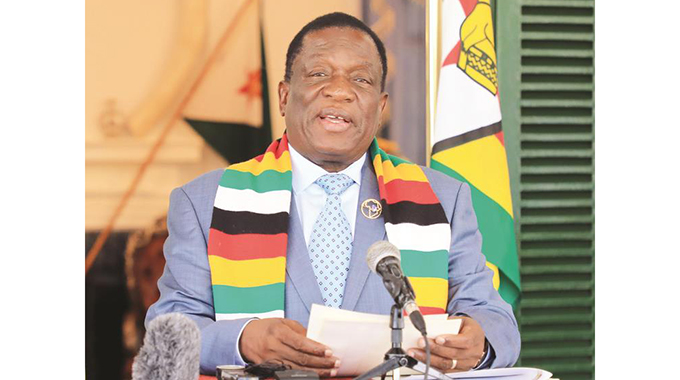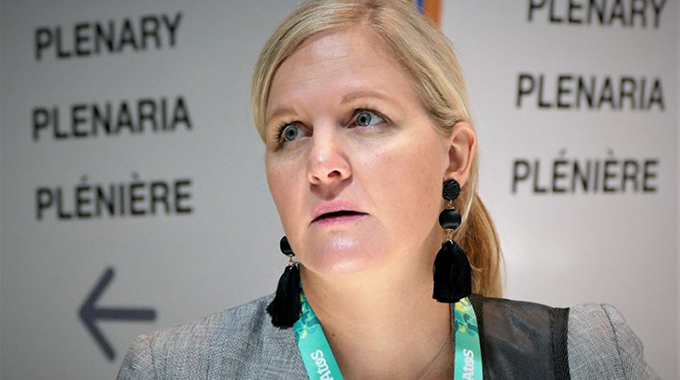World’s Top 10, eclipsing Kapil Dev

Robson Sharuko
Senior Sports Editor
WHEN Sean Williams and Donald Tiripano combined for a 187-run stand, built on the values of both defiance and excellence, little did they know they had just eclipsed a Test cricket partnership, put together 100 years ago.
Neither did they also know, too, they had just crashed their way, into the Top 10 partnerships, in cricket’s purest format, since England and Australia battled in the first Test, at The Oval in London, in March 1877.
And, for his heroics, in which he combined spirited defence and a never-say-die spirit, Tiripano saw his name being thrust into elite company where, for a golden moment, it trended alongside Kapil Dev, one of world’s greatest cricketers of all-time.
For a sport, whose soul has been battered by destructive waves, over the past two decades, trying to drown it, the tale of the resilience of domestic cricket is, as surprising, as it is refreshing.
That it, somehow, continues to provide such fascinating stories, when it was supposed to have been buried, under the weight of the avalanche of the challenges it has faced, is as remarkable as it is admirable.
When Tiripano walked onto the crease, the Chevrons were stuck in a quagmire, reeling at 142-7, and facing an innings defeat, on the fourth day, of the second Test against Afghanistan, in Abu Dhabi, last week.
Their last two batsmen, wicketkeeper Regis Chakabva and Ryan Burl, had both fallen, without scoring.
And, Rashid Khan appeared to be spinning the Asians to a comprehensive victory, to make up for his absence, in the first Test, when his team was blown away, inside two days.
Williams, their inspirational skipper, appeared to be standing alone, among his team’s ruins, with the inevitability of an innings defeat, as much a reality, as the match ending, with a day to spare.
However, what followed was a perfect demonstration of the never-say-die spirit, which every member of our national sports teams should use, as a template.
By the time Tiripano departed, beaten by a Khan googly the following day, he had scored 95 runs, just short of his maiden Test century.
And, in partnership with his skipper, they had taken the contest into the final day and made Afghanistan bat again.
He faced 258 balls and his score was 13 runs more than the combined tally of what his other teammates — Prince Masvaure (15), Kevin Kasuza (30), Tarisai Musakanda (15), Wesley Madhevere (0), Sikandar Raza (22), Burl (0) and Chakabva (0) — put on the board.
But, it’s when one considers the legend, which he pushed into the shade with his gritty knock, that his special innings gets the profile it deserves.
Tiripano’s score of 95 is now the highest individual score, in a follow-on innings by a batsman, while batting at number eight of lower in the order, in the 134-year history of Test cricket. And, it’s the first time someone has done that, in the last 39 years, in the game.
Until Tiripano’s knock, in that follow-on innings, former Indian all-rounder Dev’s 89, batting at number eight against England in 1982, was the previous highest score.
That’s remarkable company to keep given Dev was named by Wisden, in 2002, as the Indian Cricketer of the Century and was inducted into the ICC Hall of Fame in March, 2010. He is a familiar name, when it comes to Zimbabwean cricket, having single-handedly destroyed the Chevrons, at their first World Cup in England, on June 18, 1983.
With Zimbabwe having stunned the globe, with a 113-run victory over Australia at Trent Bridge, in their first match at that World Cup, India were in trouble, when the two sides met at Tunbridge Wells.
Having won the toss, and elected the bat, the Indians, were reduced to 4/9, and 5/17, after Peter Rawson and the Kevin Curran destroyed their top order. However, Dev turned the game on its head, with one of the greatest captain’s knocks at the World Cup, with an impressive unbeaten 175, from 138 balls, to take his team to 266/8. And, in reply, Zimbabwe were bundled out for 235, with Curran providing the defiance with his 73, off 93 balls, as India won by 31 runs, to advance to a semi-final, against hosts England.
“The Zimbabwe match was one match where, the entire team started feeling, we can beat the top four teams, and on any given day, we can beat anybody,” Dev said in a video, shared by ICC on Twitter, to remember that great knock.
“That inning gave the team reassurance that we have the ability that we can win, under any circumstances, and we can bounce back from any situation.”
The Indians went on to win that World Cup.
When he retired, in 1994, Dev held the world record, for the highest number of wickets in Test cricket, until legendary Windies fast bowler, Courtney Walsh, overtook him.
However, he remains the only player, in the history of Test cricket, to take 434 wickets and score more than 5000 runs.
And, in such exclusive company, Tiripano found his name being mentioned, around the world, last week, after his gritty knock, in Abu Dhabi.
Tiripano also now holds the record of the highest score, by a Zimbabwean batsman coming in at number nine, or lower, in Test cricket.
He overhauled the 91, which Andy Blignaut had scored, against the West Indies, at Harare Sports Club, in 2003.
His 187 partnership with Williams (151 not out off 309 balls), is now the highest eighth-wicket stand for the Chevrons, in Test cricket, after eclipsing the 168-run stand by Blignaut and Heath Streak, against the Windies, in 2003.
This partnership is now the 10th highest eighth wicket stand, in the history of the game.
Tiripano and Williams pushed the 173-run stand by Clarence Pellew and Jack Gregory, in the Boxing Day Test between Australia and England, in Melbourne, in 1920, out of the top 10.
Englishmen Jonathan Trott and Stuart Broad’s 332-run stand, against Pakistan at Lord’s on August 26, 2010, is top of the pile, in terms of eighth-wicket partnerships, in Test cricket.
Wasim Akram and Saqlain Mushtaq scored 313 for Pakistan, against Zimbabwe, in Sheikhupura, in October 1996; Stephen Fleming and James Franklin scored 256 for New Zealand, against South Africa, in Cape Town, in April 2006 and Nathan Astle and Adam Parore scored 253 for the Black Caps, against Australia, in Perth, in November 2001.
Les Ames and Gubby Allen scored 246 at Lord’s, in the Test match between England and New Zealand, in June 1931.
Michael Hartigan and Clem Hill scored 243, in the Test match between Australia and England, in January 1908 while Virat Kolhi and Jayant Yadav put on 241 for India, against England, in December 2016, in Mumbai.
Tom Graveney and John Murray scored 217 for England, against the Windies, at The Oval, in August 1966 and Shane Dowrich and Jason Holder put together 212 for the Windies, against Zimbabwe, in Bulawayo, in October, 2017. Now, to that illustrious list, in the top 10 eighth-wicket partnerships in the history of Test cricket, include the 187 stand by Williams and Tiripano.









Comments